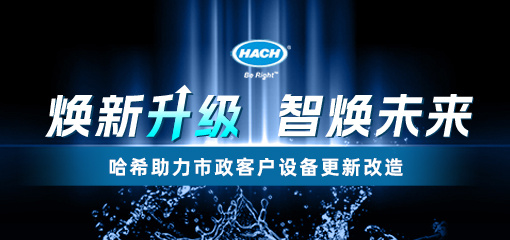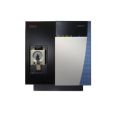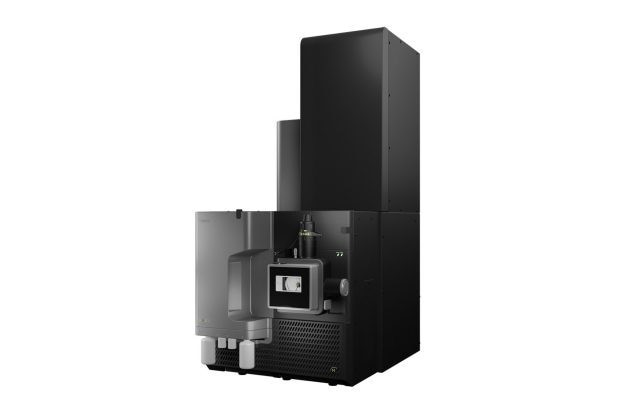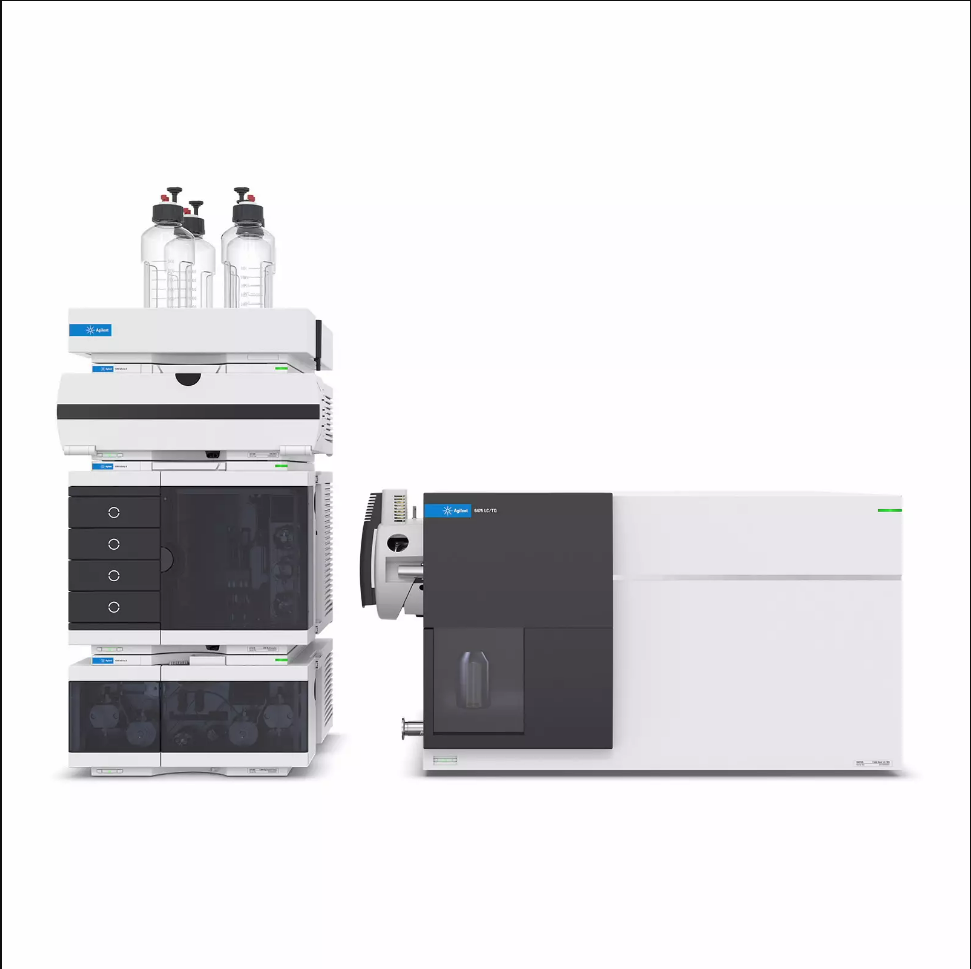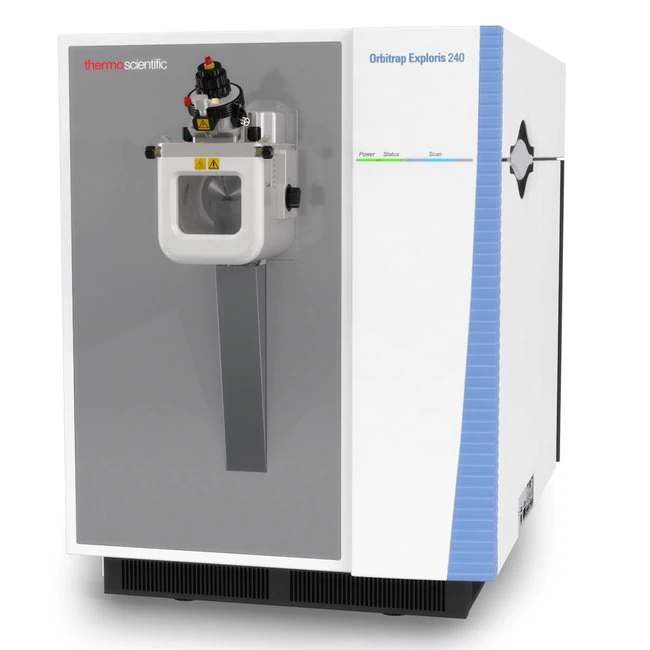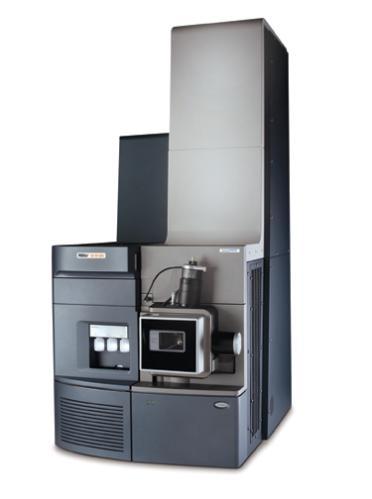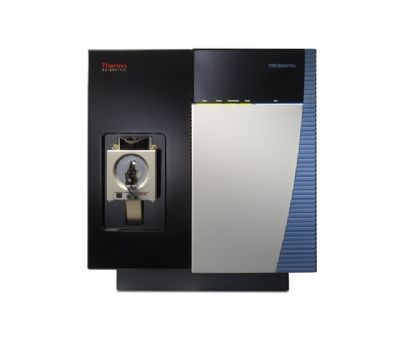
A multifaceted approach to identifying and quantifying non-targeted emerging compounds in environmental surface and ground water samples impacted by reclaimed water irrigation has been demonstrated.
? HRAM can be used to identify organic micropollutants in wastewater-impacted environments, golf course runoff, and storm water ponds.
? Online SPE coupled with a triple quadrupole MS can be used to quantitate micropollutants in water samples down to the sub-ppt (ng/L) level.
? Future work will include studying the toxicological impact of these compounds on aquatic species.
方案详情

2 Results and DiscussionHRAM Screening and Non-Targeted Identification3 Targeted and Nontargeted MS Analysisof Contaminants in Storm WaterRetention Ponds Gordon Getzinger1, P. Lee Ferguson, Jonathan Beck, Charles Yang?, Frans SchoutsenDuke University, Durham, NC, USA2Thermo Fisher Scientific, San Jose, CA, USA3Thermo Fisher Scientific, Breda, The Netherlands Introduction Comprehensive assessment of the aquatic fate and effectsof organic micropollutants is greatly hindered by the needto develop compound-specific methodologies prior tosampling and analysis. A data-driven workflow, couplinghigh-resolution, accurate-mass (HRAM) mass spectrometryand highly sensitive online solid phase extraction (SPE)analysis, ensures complete characterization of organicpollutants in aquatic environments. In this work, watersamples collected from a coastal golf course communitywere screened for the presence of trace organiccontaminants by a non-targeted HPLC-HRAM massspectrometry workflow. The occurrence of identified andconfirmed contaminants was then quantitatively assessedby a high-throughput online SPE LC-MS/MS method. Experimental Sample Collection Surface water, groundwater, and wastewater effluentsamples were collected from Kiawah Island, SC (Figure 1),a coastal golf course community where turf-grassmanagement chemicals are extensively applied andreclaimed wastewater is used for irrigation. Golf courseand storm water runoff are collected in ponds, which areinterconnected through a series of culverts andcommunicate with the adjacent tidal estuary throughmanaged outfalls. Initial sampling for non-targeted screening consisted of0.5 L grab samples collected and field extracted by SPEover two weeks in May 2010. Similarly, 10 mL grabsamples were collected in May 2011 for quantitativeanalysis. Figure 1. Aerial view of Kiawah Island, SC. Water collection ponds,shown in blue, are connected as indicated by the red lines. Sample sites were chosen to represent various routes ofmicropollutant loading into the aquatic environment andpotential routes of chemical exposure as detailed inTable 1. Golf course runoff consists of both turf-grass-management chemicals applied to the course andwastewater-derived contaminants introduced throughirrigation. Table 1. Sample sites and descriptions of potential sources ofmicropollutants to those site Sample Site Inputs Pond 5 Golf course runoff Pond 25 Golf course runoff Pond 43 Residential storm water Wastewater treatment plant lagoon (WWTP) Treated municipal wastewater Wastewater composite (WWComp.) 24 hr composite effluent Well 1 Infiltration from pond 25 Well 7 Infiltration from pond 5 Broad-Spectrum HPLC-HRAM MS Screening To begin analysis, broad-spectrum MS screening wasperformed on a Thermo Scientific"" LTQ Orbitrap Veloshybrid ion trap-Orbitrap MS using heated electrosprayionization (HESI). The instrument was operated inpositive full-scan (m/z 100-1000) mode at a resolvingpower of 60,000 (FWHM) at m/z 400. Data-DependentTop 3 HRAM MS/MS experiments were performed withdynamic exclusion and peak apex detection. Non-Targeted Compound Identification After broad-spectrum data acquisition, Thermo ScientificExactFindersoftware version 2.5 was used for non-targeted compound identification. The HRAM data wasscreened for approximately 1000 known contaminantsusing the environmental and food safety (EFS) compounddatabase and HRAM MS/MS spectral library. Automatedfeature scoring and filtering was based on chromatographicpeak shape, mass error (ppm), and isotope pattern.Structures were tentatively assigned by library searchingand later confirmed by analysis of authentic standards. Targeted Quantitation Targeted quantitation was performed with theThermo Scientific" EQuan MAX Plusonline SPE andHPLC system. A 1 mL injection was loaded onto aThermo ScientificHypersil GOLD aQcolumn (20 x2.1 mm, 12 pm particle size) and separated on aThermo Scientific" AccucoreaQ analytical column(50 x2.1 mm, 2.6 um particle size) by gradient elutionwith methanol/water mobile phase. LC Conditions Loading pump Thermo Scientific DionexUltiMate3000 Quaternary Analytical Pump LPG-3400SD Flow rate Isocratic 1 mL/min Solvent A (water) 98% Solvent B (methanol) 2% Total run time 1 8.4 min Analytical pump UltiMate 3000 Binary Rapid Separation Pump HPG-3200RS Solvent A (water) 98% Solvent B (methanol) 2% Gradient elution 0.3 mL/min Gradient Time %A 0 98 1.5 98 12.0 2 15.0 2 15.1 98 Total run time 18.4 min Autosampler 「hermo Scientific Open Accela" TM autosampler Valve switching The MS data was acquired in selected-reaction monitoring(SRM) mode on a Thermo Scientific TSQ Quantivatriple-stage quadrupole MS equipped with a HESIinterface. MS Conditions Ion mode Positive HESI Cycle time (s) 0.75 CID gas pressure (mTorr) 1.5 Spray voltage (V) 3500 Sheath gas (arb units) 60 Aux gas (arb units) 20 Sweep gas (arb units) 2 lon transfer tube temp (℃) 350 Vaporizer temp (℃) 350 RF lens Used calibrated RF lens values Data processing, calibration, and quality control wereperformed using Thermo ScientificTraceFindersoftwareversion 3.1. Representative HRAM chromatograms of SPE extractssubjected to non-targeted screening for the identificationof organic pollutants and selection of target compoundsfor quantitative analysis are shown in Figure 2. Figure 2. Representative HRAM chromatograms from non-targetedscreening of SPE extracts from Pond 5 sample (top) and wastewater composite sample (bottom) The non-targeted identification of fluridone in Pond 43 byEFS database screening and spectral library searching inExactFinder software is demonstrated in Figure 3. Panel Ashows an EFS database match for fluridone with agoodness of fit score of 0.93 between a modeledchromatographic peak and the observed peak. Panel Bcompares a modeled mass spectrum for the proposedpseudomolecular ion [CHFNO+H]+ and the averagedfull-scan observed data with excellent mass accuracy(-0.31 ppm) at the mono-isotopic peak and a 100%isotope pattern score. In Panel C, library searching of theobserved HRAM CID MS’ spectrum returned a match tothe EFS library entry for fluridone with a score of 70%. Figure 3. Non-targeted identification of fluridone in Pond 43. A) EFSdatabase match for fluridone between a modeled chromatographicpeak (gray area) and the observed peak (black trace). B) Comparisonof a modeled mass spectrum for the proposed pseudomolecularion[CHFNO]M+H (blue) and averaged full-scan observed data (black).C) Library searching of the observed HRAM CID MS’spectrum(black) returns a match to the EFS library entry for fluridone (blue)with a score of 70%. A partial list of compounds identified by non-targetedscreening and the samples in which they were found arelisted in Table 2. Table 2. Compounds identified by non-targeted screening Compound Sample(s) Atraton Ponds 25, 43 Atrazine Ponds 5, 25,43, WWTP, WWComp. Atrazine-2-hydroxy Pond 25 Carbamazepin WWTP, WW Comp. Carbendazim WWTP DEET Ponds 5, 25, 43, WWTP, WWComp. Fluridone Ponds 25,43 Hydrocortisone WWTP,WW. Comp. Mefluidide Ponds 5, 25 Metolcarb WWTP Metoprolol WWTP, WW Comp. Promecarb WW Comp. Propanolol WWTP, WW Comp. Pyroquilon Ponds 5, 25, WWTP, WW Comp. Sulfamethoxazole WW Comp. lemeazepam WW Comp. Trimethoprim WWTP,WW Comp. WWTP=Wastewater treatment plant lagoon W W Comp=Wastewater composite Targeted Quantitation by Online SPE LC/MS Based on the results of the non-targeted screening,knowledge of chemical usage on the island, and readilyavailable reference standards, an online SPE LC/MSmethod was developed to quantify the occurrence anddistribution of wastewater- and turf-grass-management-derived organic pollutants on Kiawah Island. Table 3 provides details of the online SPE LC/MS method,including the compounds monitored and the instrumentlimits of detection (LOD). Samples were quantitated downto the sub-ppt (ng/L) level. Figure 4 displays the measured contaminant concentrationsin representative storm and wastewater retention ponds. Table 3. Compounds monitored by online SPE LC/MS, method parameters, and instrument limits of detection Figure 4. Boxplots depicting the measured contaminant concentrations in wastewater storage and storm water retention ponds onKiawah Island. Purple boxes represent the interquartile range and the bar represents the median value. Hashed lines depict the range ofthe data and outliers are plotted as open circles. Conclusion A multifaceted approach to identifying and quantifyingnon-targeted emerging compounds in environmentalsurface and ground water samples impacted by reclaimedwater irrigation has been demonstrated. · HRAM can be used to identify organic micropollutantsin wastewater-impacted environments, golf courserunoff, and storm water ponds. ·Online SPE coupled with a triple quadrupole MS canbe used to quantitate micropollutants in water samplesdown to the sub-ppt (ng/L) level. ·Future work will include studying the toxicologicalimpact of these compounds on aquatic species. www.thermoscientific.com O2014 Thermo Fisher Scientific Inc. All rights reserved. ISO is a registered trademark of the International Organization for Standardization(Organisation Internationale De Normalization). All other trademarks are the property of Thermo Fisher Scientific Inc. and its subsidiariesThis information is presented as an example of the capabilities of Thermo Fisher Scientific products. It is not intended to encourage use ofthese products in any manners that might infringe the intellectual property rights of others. Specifications, terms and pricing are subject to. change. Not all products are available in all countries. Please consult your local sales representative for details. . Thermo Fisher Scientific. San Jose, CA USA is ISO 9001:2008 Certified ISO 9001 Thermo SCIENTIFIC SCIENTIFICA Thermo Fisher Scientific BrandANE
确定
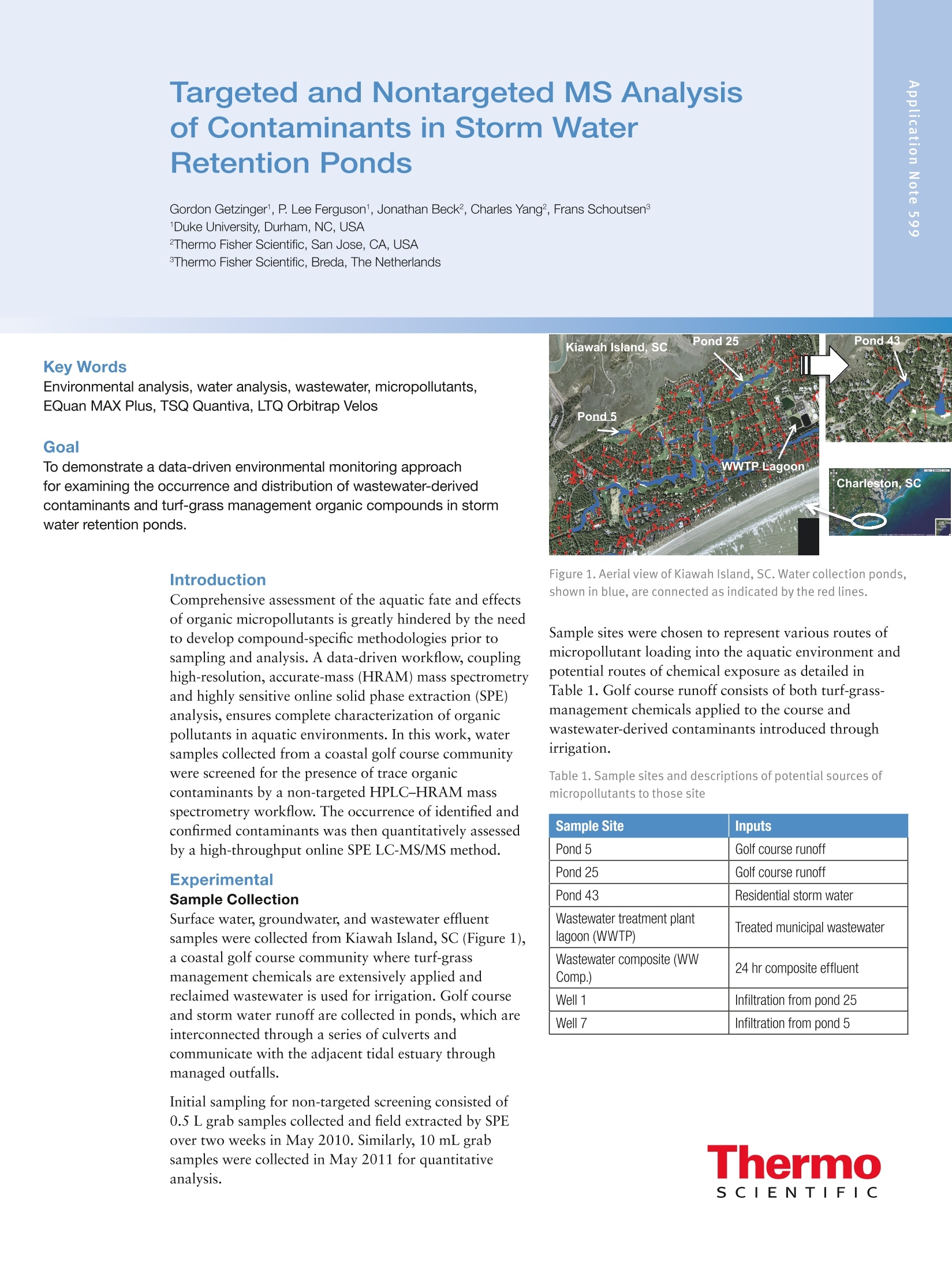
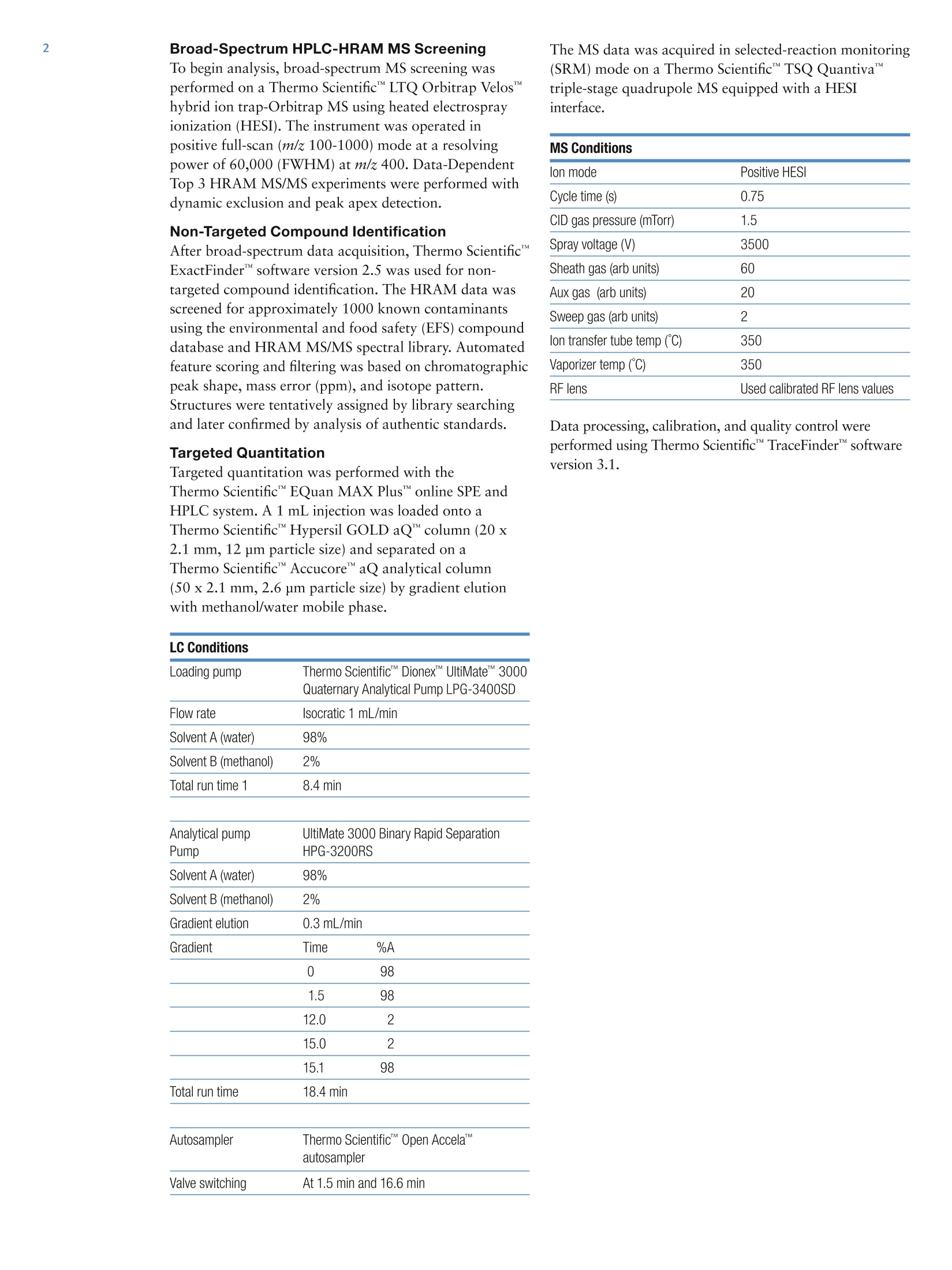
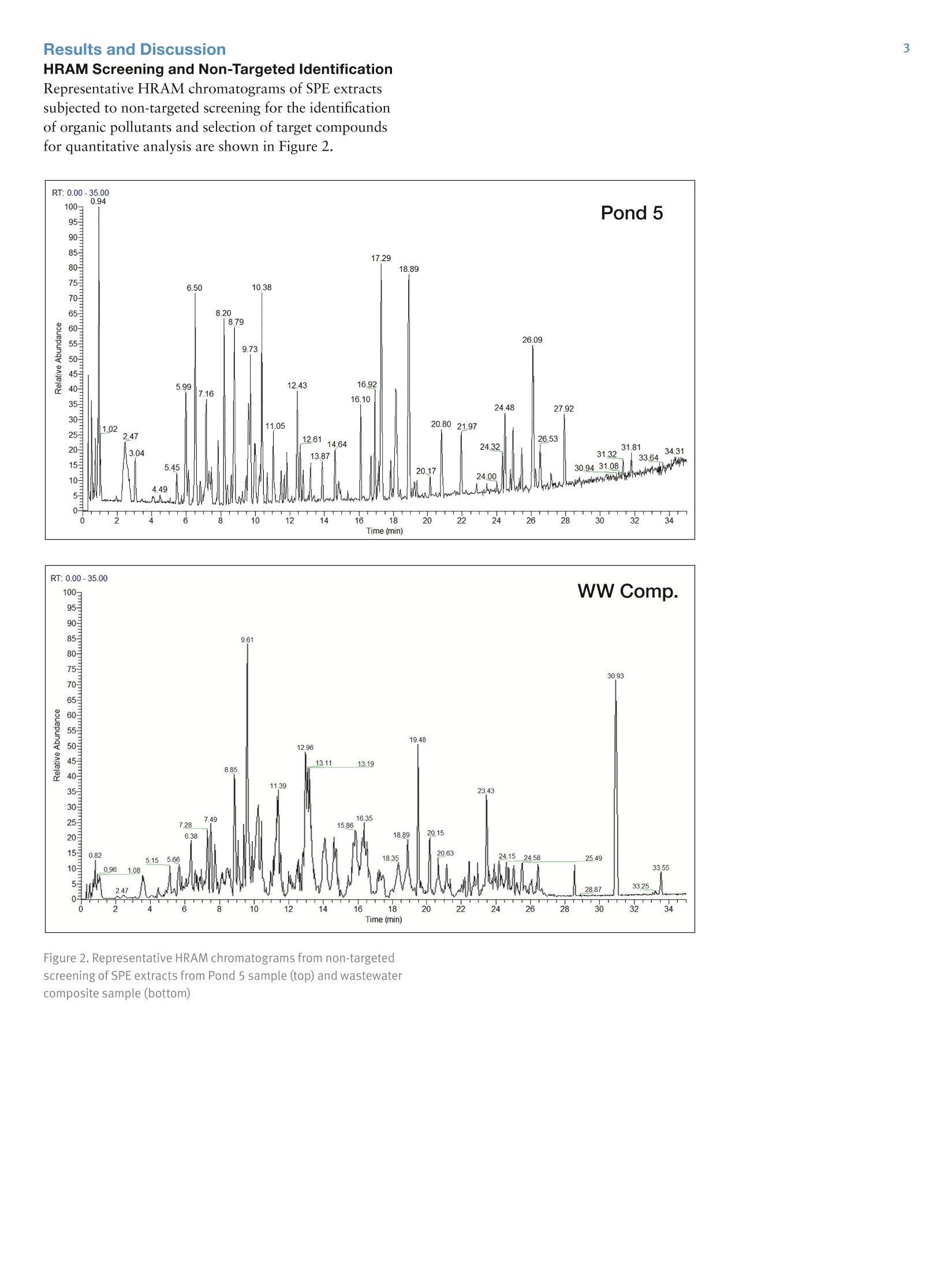
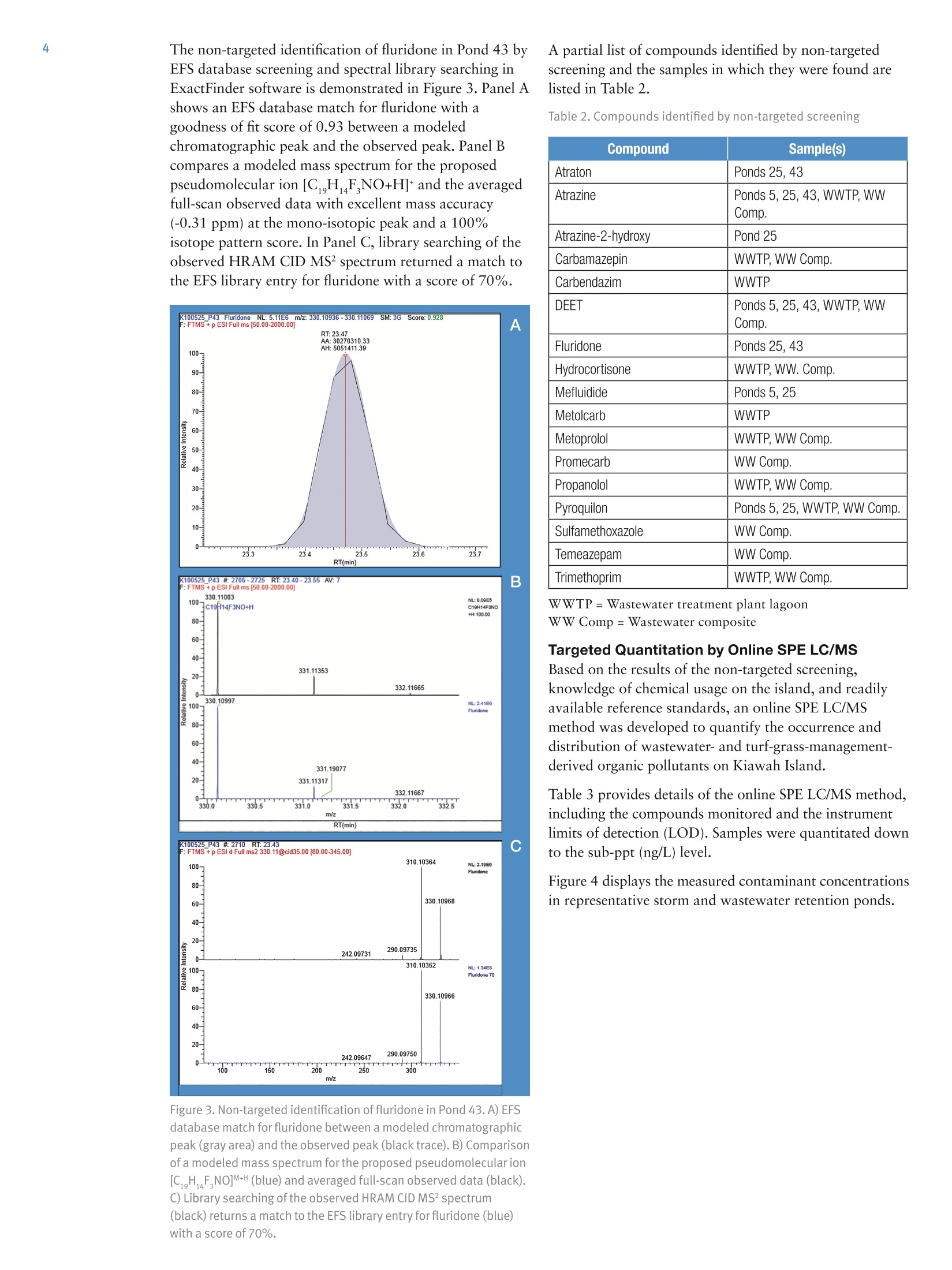
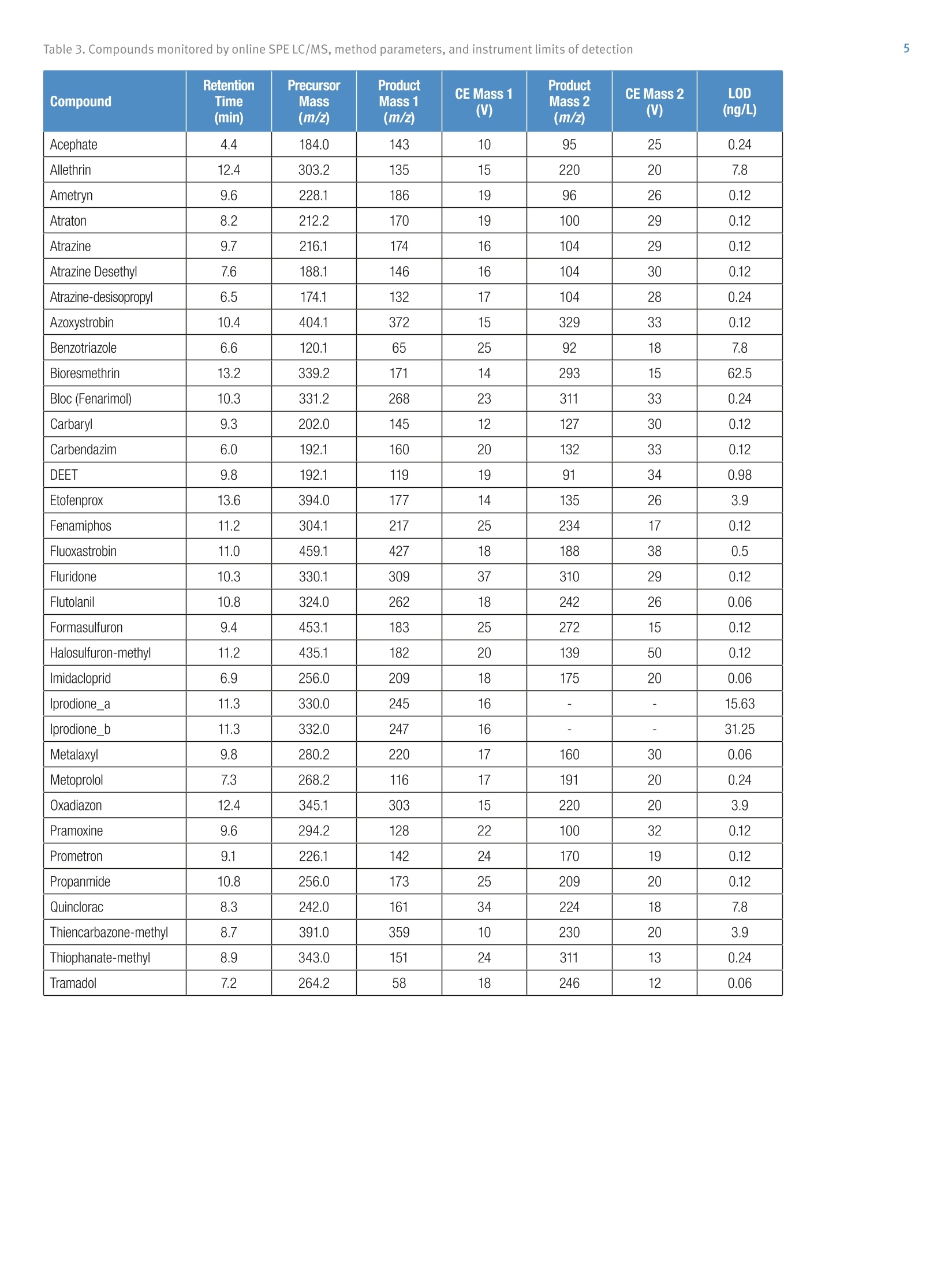
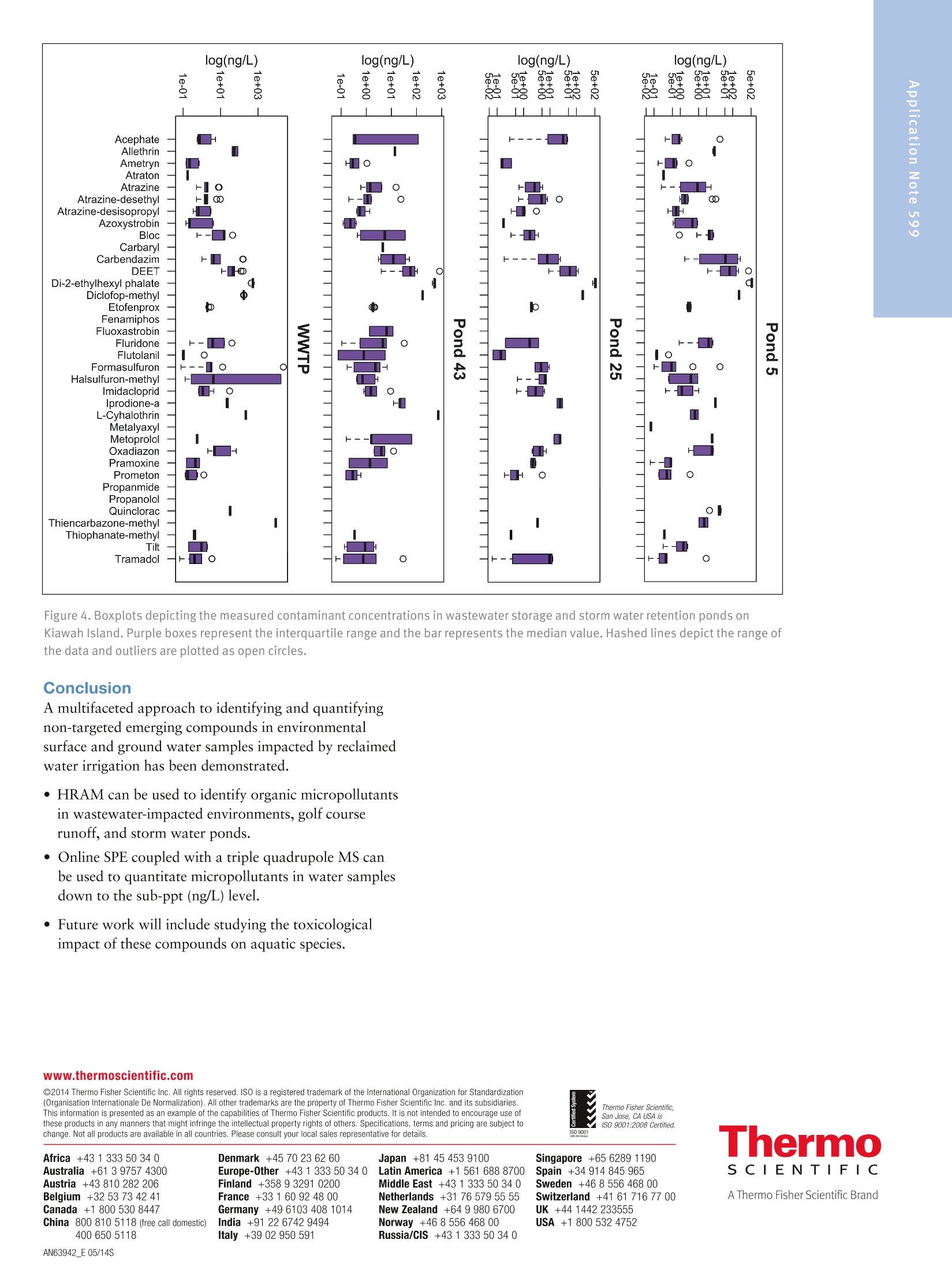
还剩4页未读,是否继续阅读?
赛默飞质谱分析为您提供《雨水蓄水池中污染物检测方案(液质联用仪)》,该方案主要用于废水中有机污染物检测,参考标准--,《雨水蓄水池中污染物检测方案(液质联用仪)》用到的仪器有赛默飞TSQ Quantiva 三重四极杆质谱仪
推荐专场
相关方案
更多
该厂商其他方案
更多

